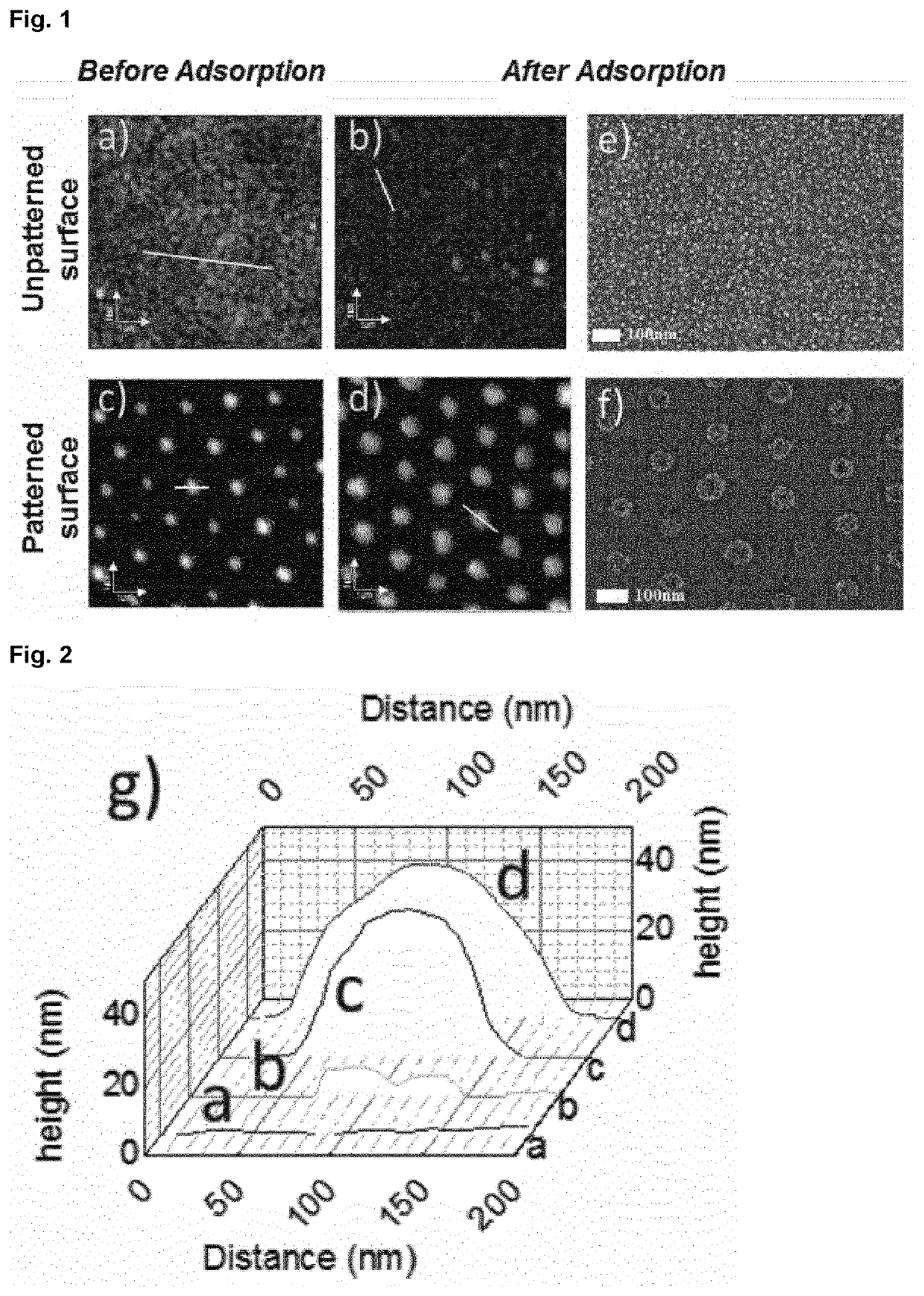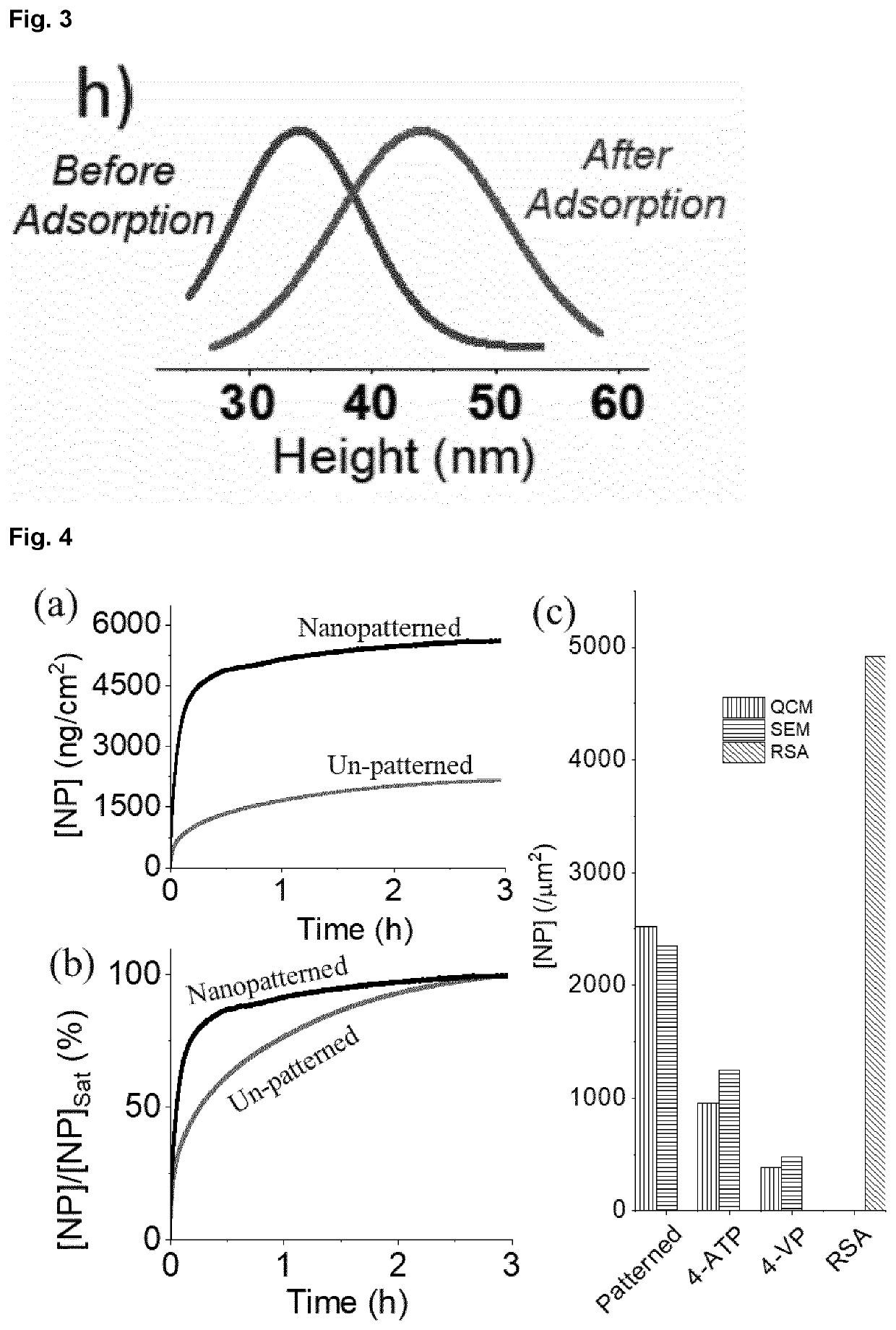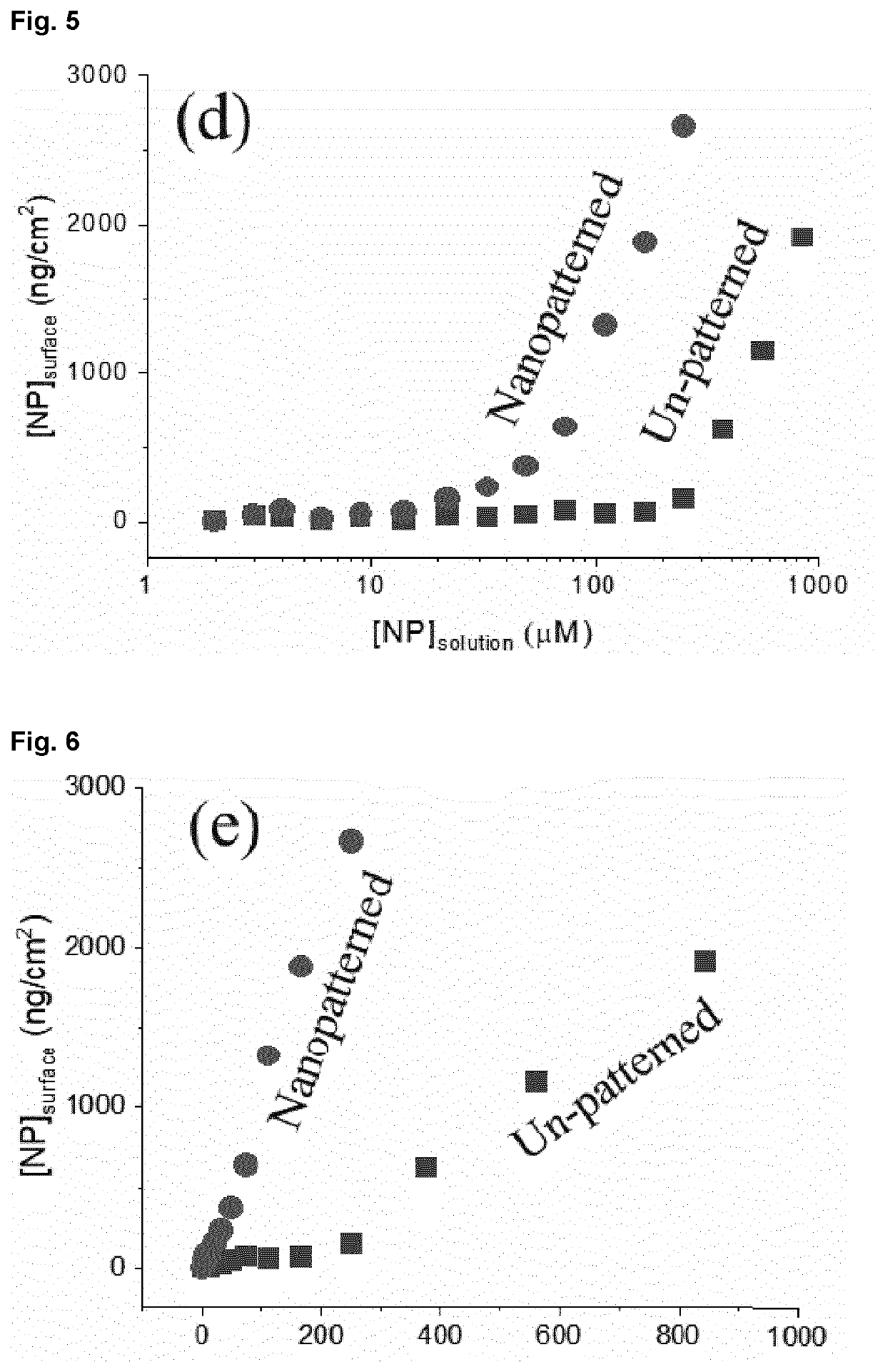Affinity sensor, in particular qcm sensor
a technology of affinity sensors and qcm, applied in the field ofaffinity sensors, can solve the problems of no prior art certainty on how nanopatterns affect the adsorption of solutes, and no situation has been reported
- Summary
- Abstract
- Description
- Claims
- Application Information
AI Technical Summary
Benefits of technology
Problems solved by technology
Method used
Image
Examples
example 1
n of Gold Nanoparticles on QCM Sensor Surface
[0060]Binary nanopatterns enabling selective adsorption onto nanoscale regions may be prepared using self-assembled copolymer colloidal templates on a QCM chip surface. Details on this approach that allows creating high-density patterns of nanoscale features spanning large areas can be found, for instance in the papers by Yap, F. L.; Thoniyot, P.; Krishnan, S.; Krishnamoorthy, S. Nanoparticle, “Cluster Arrays for High-Performance SERS through Directed Self-Assembly on Flat Substrates and on Optical Fibers,” ACS Nano 2012, 6 (3), and by Nurmawati, M. H.; Ajikumar, P. K.; Renu, R.; Valiyaveettil, S., “Hierarchical Self-Organization of Nanomaterials into Two-Dimensional Arrays Using Functional Polymer Scaffold,” Adv. Funct. Mater. 2008, 18 (20), 3213-3218.
[0061]The organic copolymer templates on the surface may be converted to patterns that enable confined, selective adsorption on well-defined nanoscale features on surface. By selecting temp...
example 1a
of Gold Nanoparticles on QCM Sensor Surface Under Flow
[0074]The experiments of example 1 were made in static conditions. The experiments were repeated under flow conditions. Binary patterns were prepared on QCM chips as described in example 1. The nanoscale regions with affinity for the gold nanoparticles had a surface area amounting to 33% of the total interface surface area. Gold nanoparticles were deposited from suspensions with concentrations between 85 nM and 0.85 mM. The flow of the suspensions was set to 10 μL / min (microlitres per minute), the chamber above the sensor surface had a volume of 40 μl and the temperature was held constant at room temperature. The deposition of the gold nanoparticles was monitored by QCM-D. FIG. 10 shows the deposited mass density, normalized by the surface area available for adsorption, at saturation as a function of concentration. It can be seen that significantly higher adsorption densities than on an un-patterned surface may also be obtained u...
example 1b
the Fill Factor of the Nanopattern
[0075]QCM-D measurements of the adsorption of gold nanoparticles were made as in the previous examples using nanopatterned sensor interfaces with different fill factors. The first binary pattern corresponds to the one used in examples 1 and 1a and had a fill factor of 33%. A second nanopattern had a fill factor of 61%: the nanoscale regions having affinity for the gold nanoparticles were of the same size as those of the first binary pattern but the density of the regions was increased. It was observed that the overall adsorption (taking the entire sensor interface into account) increases when the fill factor is increased. To understand if there is an influence of the fill factor on the adsorption density within the regions having affinity, the adsorbed masses were normalized by the surface area available for adsorption. No significant difference was noted, which indicates that the density of adsorbed nanoparticles within each feature remained the sa...
PUM
 Login to View More
Login to View More Abstract
Description
Claims
Application Information
 Login to View More
Login to View More - R&D
- Intellectual Property
- Life Sciences
- Materials
- Tech Scout
- Unparalleled Data Quality
- Higher Quality Content
- 60% Fewer Hallucinations
Browse by: Latest US Patents, China's latest patents, Technical Efficacy Thesaurus, Application Domain, Technology Topic, Popular Technical Reports.
© 2025 PatSnap. All rights reserved.Legal|Privacy policy|Modern Slavery Act Transparency Statement|Sitemap|About US| Contact US: help@patsnap.com



